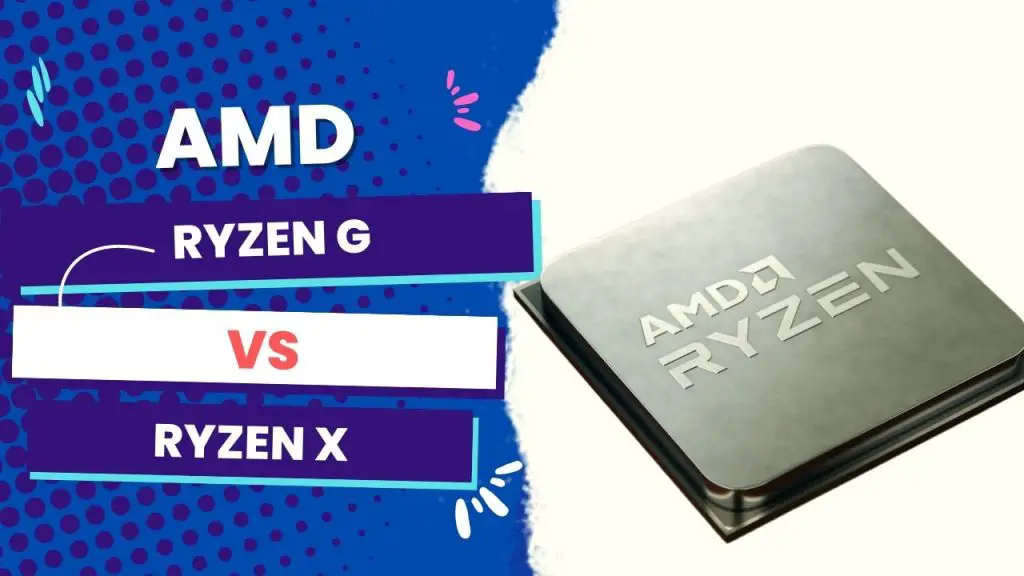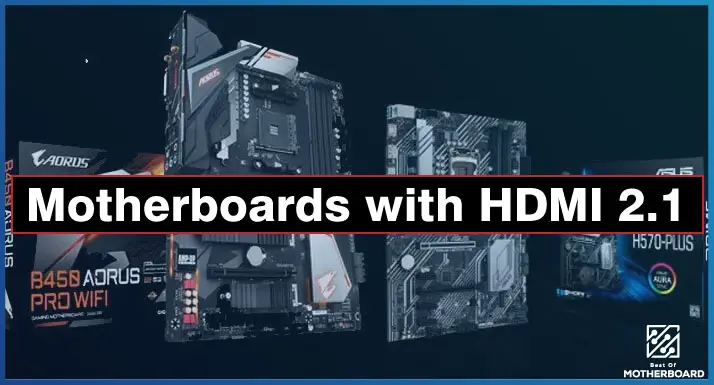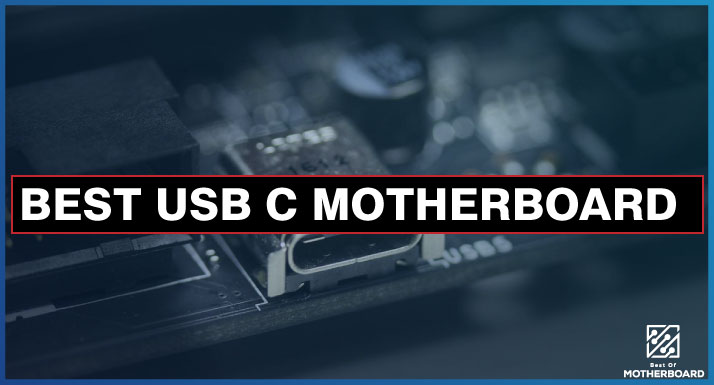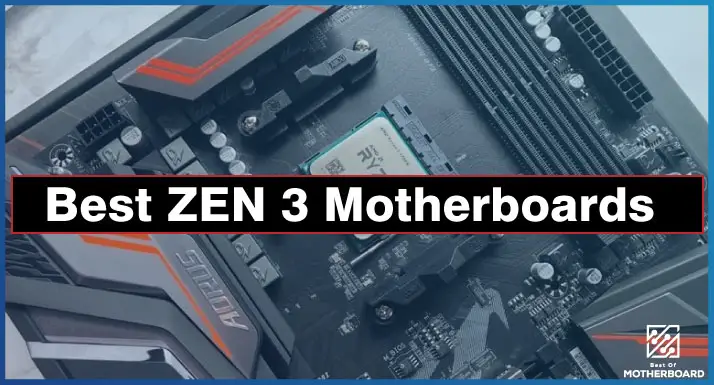Ryzen G processors are known for their integrated AMD Radeon Vega graphics, while Ryzen X processors are reputable for having higher clock speeds. Ryzen G processors are more affordable, making them suitable for general use and entry-level gaming. Ryzen X processors are more powerful with more cores and better for heavy-duty tasks like video rendering or gaming at high resolutions, but they require a separate graphics card.
Of course, the price difference is a prominent factor. But there’s more.
In a multi-core benchmark test like Cinebench R23, the Ryzen 9 5900X scores around 33% higher than the Ryzen 5 5600G. This means that for heavy-duty applications like video rendering or 3D modeling, you can expect a significant performance increase by using a Ryzen X processor over a Ryzen G processor.
As a bonus, I will show you how I tested these two chips in some popular games and how they performed. Hopefully, the details in this guide will point you in the right direction for your final decision.
Most Popular Ryzen
Ryzen G and X Processors: Similarities
At a glance, there isn’t much that distinguishes the 5600G from the 5600X because they look like the same chip besides the difference of a single transistor on the integrated heat spreader.
- They both have the same six cores and 12 threads.
- They are both based on the Zen 3 architecture, as opposed to all the laptop APUs, which gets confusing (it can be confusing when AMD names APUs, but you shouldn’t take them for granted).
- Both are unlocked for overclocking with a TDP of 65 watts.
- The 5600x and 5600g have the same rated memory specification from AMD of 3200 megahertz.
Despite these similarities, there are some differences between these two chips. If you are torn between these two Ryzen versions, you should be focused on the differences, which we will go through in the next section.
Top 5 Ryzen G Series Processors
| Image | Product | Detail | Price |
|---|---|---|---|
 | AMD Ryzen 5 5600G 6-Core |
| Check Price On Amazon |
 | AMD Ryzen 7 5700G |
| Check Price On Amazon |
 | AMD Ryzen™ 5 4600G |
| Check Price On Amazon |
 | AMD Ryzen 3 3200G |
| Check Price On Amazon |
 | AMD Ryzen™ 5 4500G |
| Check Price On Amazon |
Top 5 Ryzen X Series Processors
| Image | Product | Detail | Price |
|---|---|---|---|
 | AMD Ryzen™ 7 5700X |
| Check Price On Amazon |
 | AMD Ryzen 5 5600X |
| Check Price On Amazon |
 | AMD Ryzen 7 7800X3D |
| Check Price On Amazon |
 | AMD Ryzen™ 9 7950X |
| Check Price On Amazon |
 | AMD Ryzen™ 7 7700X |
| Check Price On Amazon |
Ryzen G and X Series Processors Compared
| Specification | Ryzen 5 5600G | Ryzen 9 5900X |
|---|---|---|
| Cores/Threads | 6/12 | 12/24 |
| Base Clock Speed | 3.9 GHz | 3.7 GHz |
| Boost Clock Speed | 4.4 GHz | 4.6 GHz |
| Integrated Graphics | Yes | No |
| TDP (Thermal Design Power) | 65W | 105W |
| Price | From $135 | From $259 |
1. Clock speeds
When it comes to clock speeds, Ryzen 5600G has a high-frequency clock of 3.9 gigahertz versus 3.7 on the X version. Meanwhile, the X has a faster boost clock at 4.6 gigahertz, while the G version is offered at 4.4 gigahertz.
2. L3 Cache
Another notable difference between these two chips can be seen in the L3 cache. While the G version has 16 megabytes, the Ryzen X has 32 megabytes.
I’ve noticed that AMD emphasized this factor pretty heavily when they released the Zen 3. Having all of that cash easily accessible on a single die allows for performance enhancement, as seen in the Ryzen 5000 series.
It explains a lot about what to expect in terms of performance on the 5600G.
3. PCI support
Another interesting difference between these two chips is that the G version can only support PCI Express 3.0, whereas the X version can support PCI Express 4.0 and get the advantage of faster SSDs (maybe not from GPUs but just the general speed that comes with those new NVME 4.0 drives.)
Still, this factor likely won’t make a big difference for most consumers.
Now, if we are really going to examine the performance of these two chips to determine which is worth your investment, then it’s not enough to just know what’s under the hood.
For this reason, I decided to put the X and G Ryzen versions on the gaming benchmarking station to see how big of a difference there actually is. (I used an MSI B550 gaming motherboard with an RTX 3080 GPU for the test to achieve improved precision.)
But before that, I want to show you how these two chips performed in our tests.
Comparing Benchmarking Performance
In the earlier part of this article, we established how the differences between the G and X versions do make some sort of difference. When tested on the latest Cinebench r23, the X was 5% faster on multi-core and a little less than 8% faster on single-core, indicating that the 5600X version is faster than its counterpart.
However, if you run this test on an older Cinebench version like the r15, you may see that the difference is smaller (perhaps X is only 2 percent faster in multi-core).
But there, I’d say it is still respectable given that we still get as high as 94 percent total CPU performance out of a chip that has a GPU integrated into it, and then there’s the Zen 3 architecture.
Comparing Performances in Video Games
When compared to CPUs, there is a significant difference in bottlenecks between these two chips and how they affect the video gaming experience.
Across popular video games tested with both chips, the Ryzen X was significantly faster than the G version:
Games where Ryzen X is faster than G
| Games | Ryzen X speed over the G version |
| Fortnight | 1.5 percent faster |
| Tomb Raider | 4 percent faster |
| Borderlands 3 | 1.93 percent faster |
| The Witcher | 7.8 percent faster |
| Horizon Zero Dawn | 3.9 percent faster |
| COD warzone | 9.8 percent faster |
| GTA 5 | 3.2 percent faster |
| Cyberpunk | 0.18 percent faster |
| Death Training | 3.9 percent faster |
| Crises Remastered | The X version was 10 percent faster. |
| The Devil may cry. | 3.5 percent faster |
| Death Training | 3.9 percent faster |
| Valorent | 50 percent faster |
Games where Ryzen G is faster than X
| Games | Ryzen G speed over X version |
| Metro Exodus | 0.5 percent faster. |
| Red Dead Redemption | 5 percent faster |
It is safe to conclude that in most games, the X version will be the faster chip. In any of these games, you will enjoy the 5600X chip better than the G version.
But let’s remember that in games that run more than 60 fps, they will still run over that same value on the 5600 G and the 5600X chips. So, no hard feelings.
What this means to you as a gamer
If you’re looking to get the most out of your CPU performance, you probably want to pick up the Ryzen X version, especially when you consider CS and Volorent, since the X version spreads its legs in those areas more than the G version.
On the other hand, the Ryzen 5600G is a decent option if you plan to play single-player experiences or those AAA titles or esports titles (like Fortnite and COD: Warzone), because there aren’t many substantiating differences and you’re going to have pretty much the same feel.
I am, in fact, confident that if I gave you two separate systems with the Ryzen X and G side by side with a game like The Witcher 3 or even Cyberpunk, you wouldn’t be able to tell the difference with all the counters and fps measurements turned off.
Honestly, these two chips are so close in performance.
Final verdict
I like that AMD has kept the price of both the x and g Ryzen versions reasonable. While both are good, the non-X comes with a smaller form factor CPU cooler, thereby offering more for less money.
I also need to mention the concern about heat and power consumption. If this sounds like a priority to you, then you are better off with Ryzen non-X since they feature nearly half the TDP (a little compromise on performance).
Still, it is fair to conclude that X versions offer added performance at the cost of requiring decent airflow and a decent output power supply.
Overall, I recommend you go for the Ryzen X version if you can afford it, especially if you prioritize maximum gaming performance. But if budget is a constraint, you can go for the Ryzen G, but be prepared to observe a 5 to 10 percent difference in performance.
Again, you can overclock the non-X CPUs, but then you miss out on XFR’s performance and power management.
And as you know, this leaves you with higher temperatures and more power usage.
The choice is yours.
Cheers.




